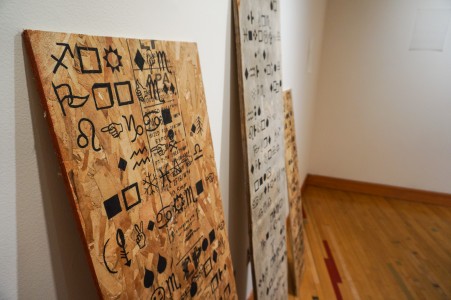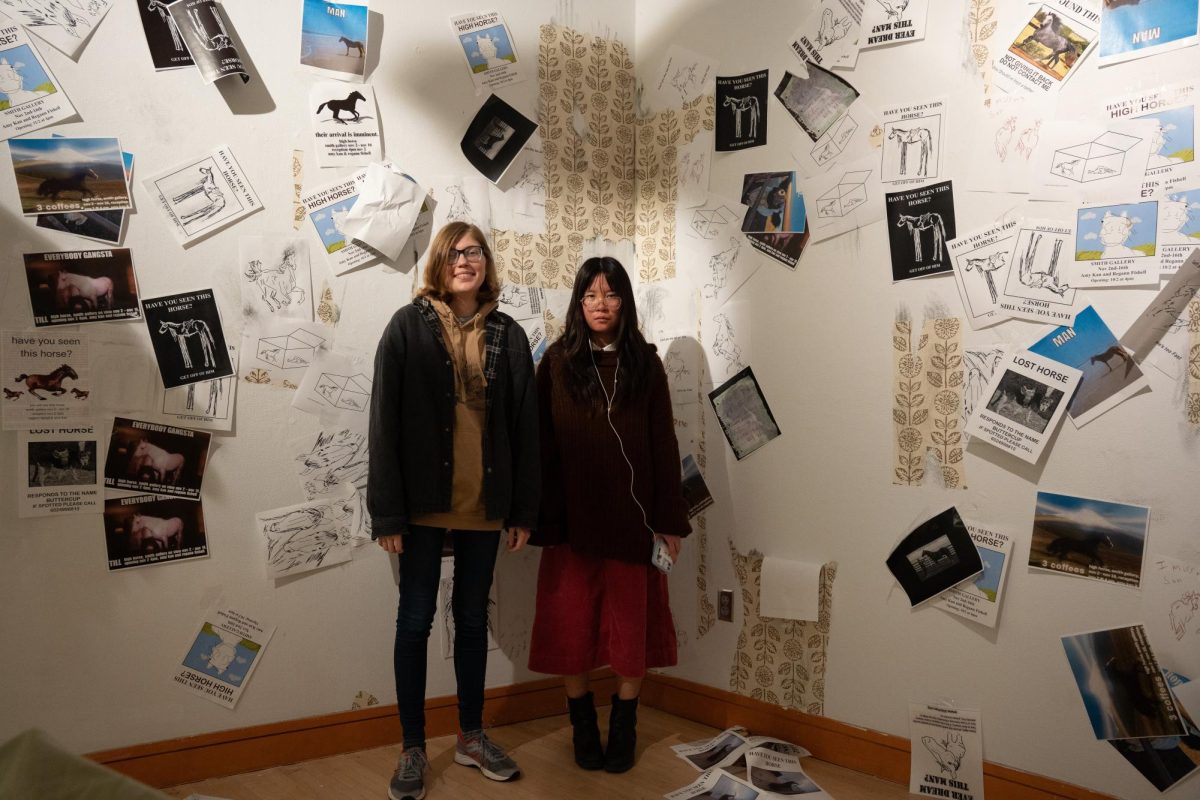Smith Gallery is currently hosting “Ghost in the Machine,” a series of multimedia works by Amy Linder ’14 that address the shifting meanings of loss and history in a digital age. The show features paintings, drawings, collages and prints which reflect Linder’s musings on the implications the Internet holds for the way history and culture is reproduced and remembered.
For Linder, the show began with a philosophical concept and developed as a series of artistic works centered around the ways digital information might one day be read as a relic of the past.
“I’m really interested in the idea of us making assumptions about ancient cultures based on archaeological evidence because of what seems to me to be the arbitrariness of what gets left behind,” she said.
She noted the differences in how information has changed forms so drastically in recent years.
“Our culture is probably 98 percent digital at this point; like our cultural records, our stories of memory and important information, even our great novels and texts at this point, are produced and stored on the internet in a digital form … I’m really interested in this idea that what is so important to our culture now would be lost in that future,” Linder said.
Among the pieces exploring this sentiment is a series of drawings on Dura-Lar material entitled “Over Thirty Million,” a reference to the number of active Facebook accounts belonging to deceased people, a statistic which fascinates Linder. This concept, which she describes as “digital ghosts,” embodies a tension between the progression of the grieving process and the static nature of online information.
But Linder’s artistic expressions of grief are also personal. Featured among her works is an excerpt from a philosophy paper written by former Grinnell student Nick Klawes, who passed away in 2012. The text, translated by Linder into the petroglyphic font Wingdings, adds a surprising humor to a visual expression of a grieving process.
“I think in a lot of ways my experience with losing [Nick] has been what prompted me to want to make the works in the show, to sort of find a way to translate my experience … those paintings came out of this desire to think about [that],” Linder said. “The pieces to me are really funny because they’re Wingdings, and Wingdings are this sort of meaningless alphabet of digital petroglyphs that don’t exist for a real reason—no one uses them to communicate, they just sit there and look kind of funny, but I was thinking about what if these tablets bearing this inscription [are] what my imaginary archaeologists 2,000 years in the future find? What if all that remains of our language and culture is Wingdings?”
Ultimately, says Linder, the pieces on display in “Ghost in the Machine” represent the culmination of four years’ worth of experiences at Grinnell. Her prints are a direct result of the coursework that has shaped her artistic education, but her synthesis of philosophical explorations into visual mediums demonstrates her ability to transcend academic categorization.
“This show feels like it had been simmering in me for a long long time now, and it just sort of came out at this point.”




















































